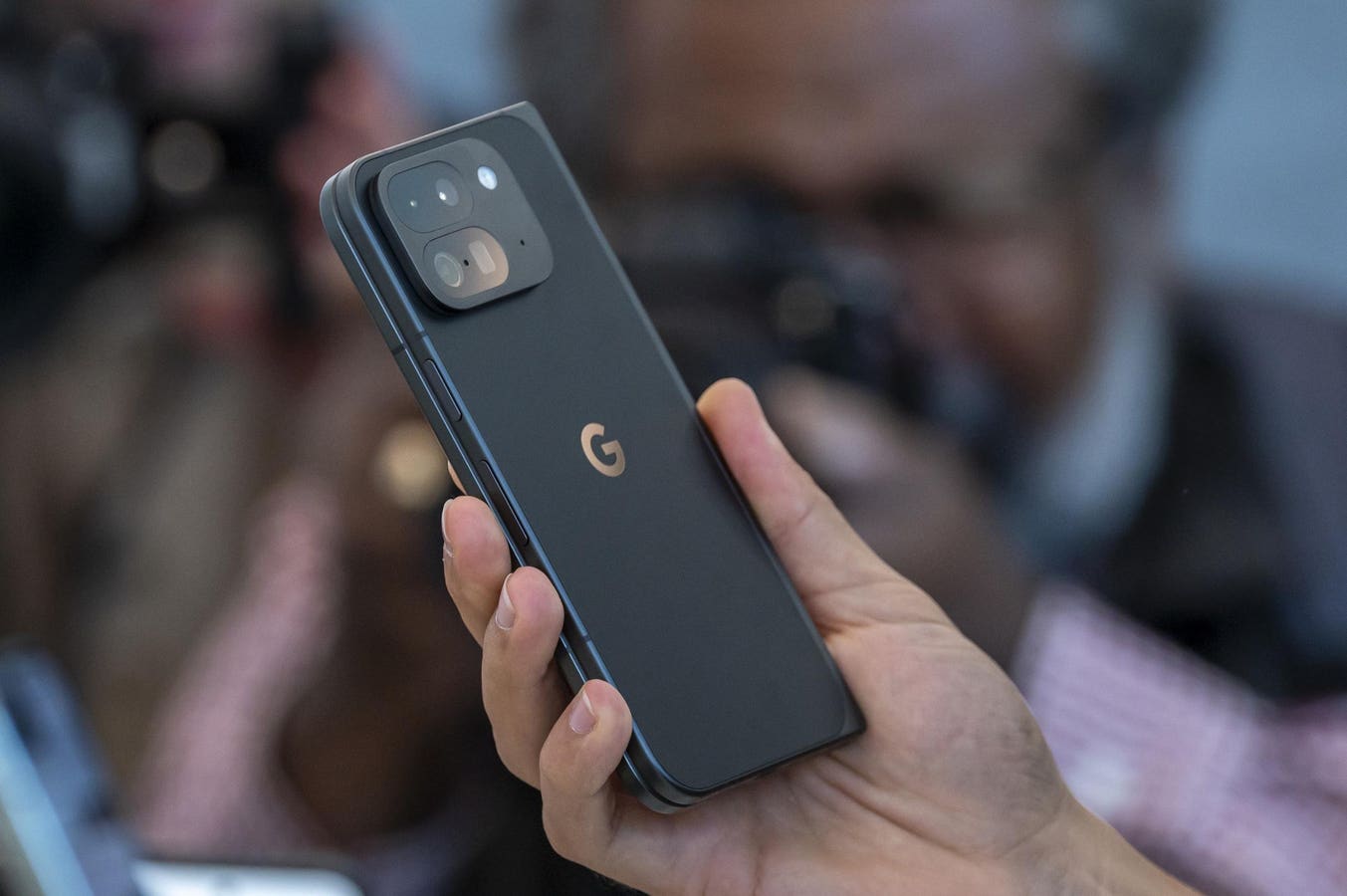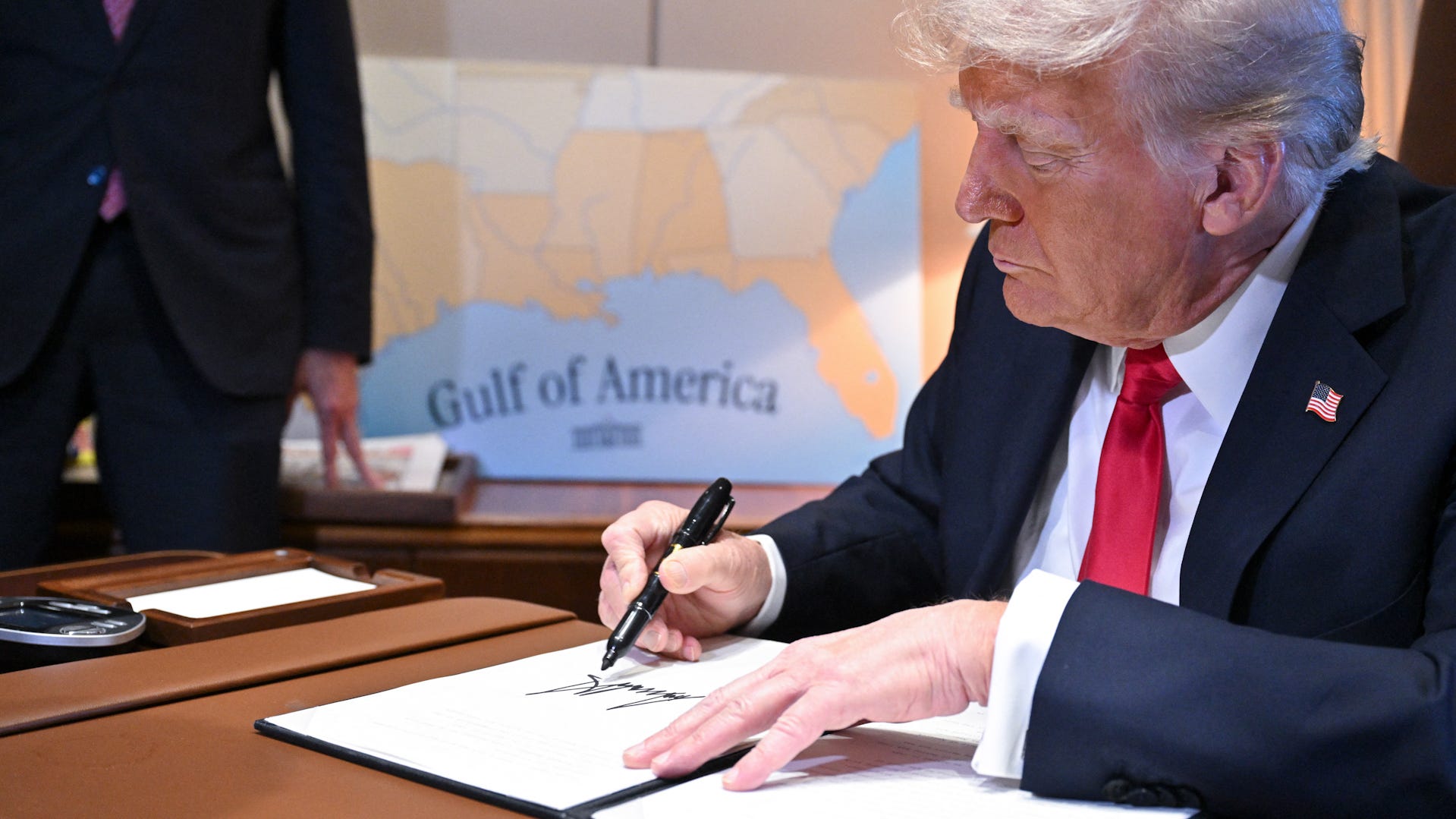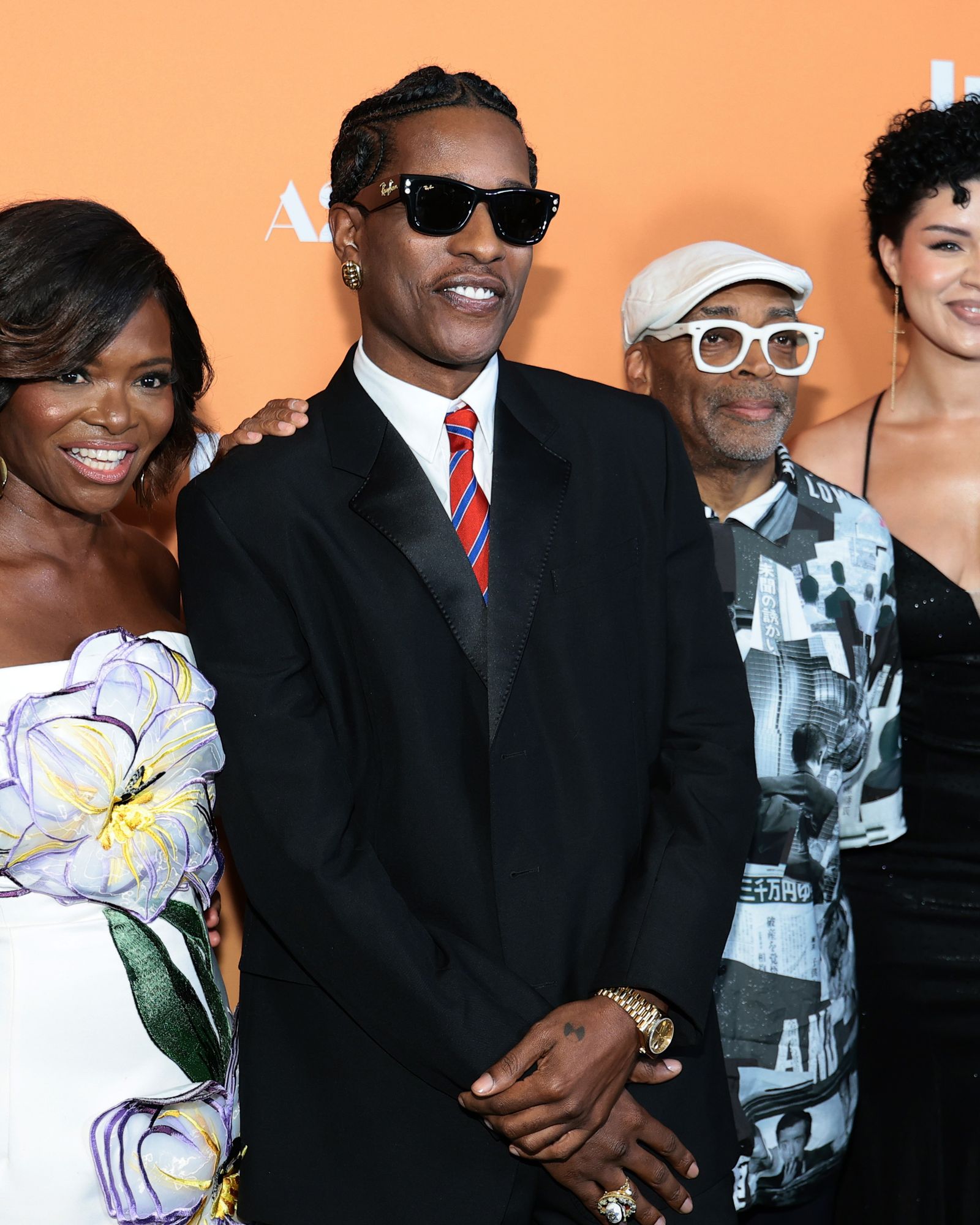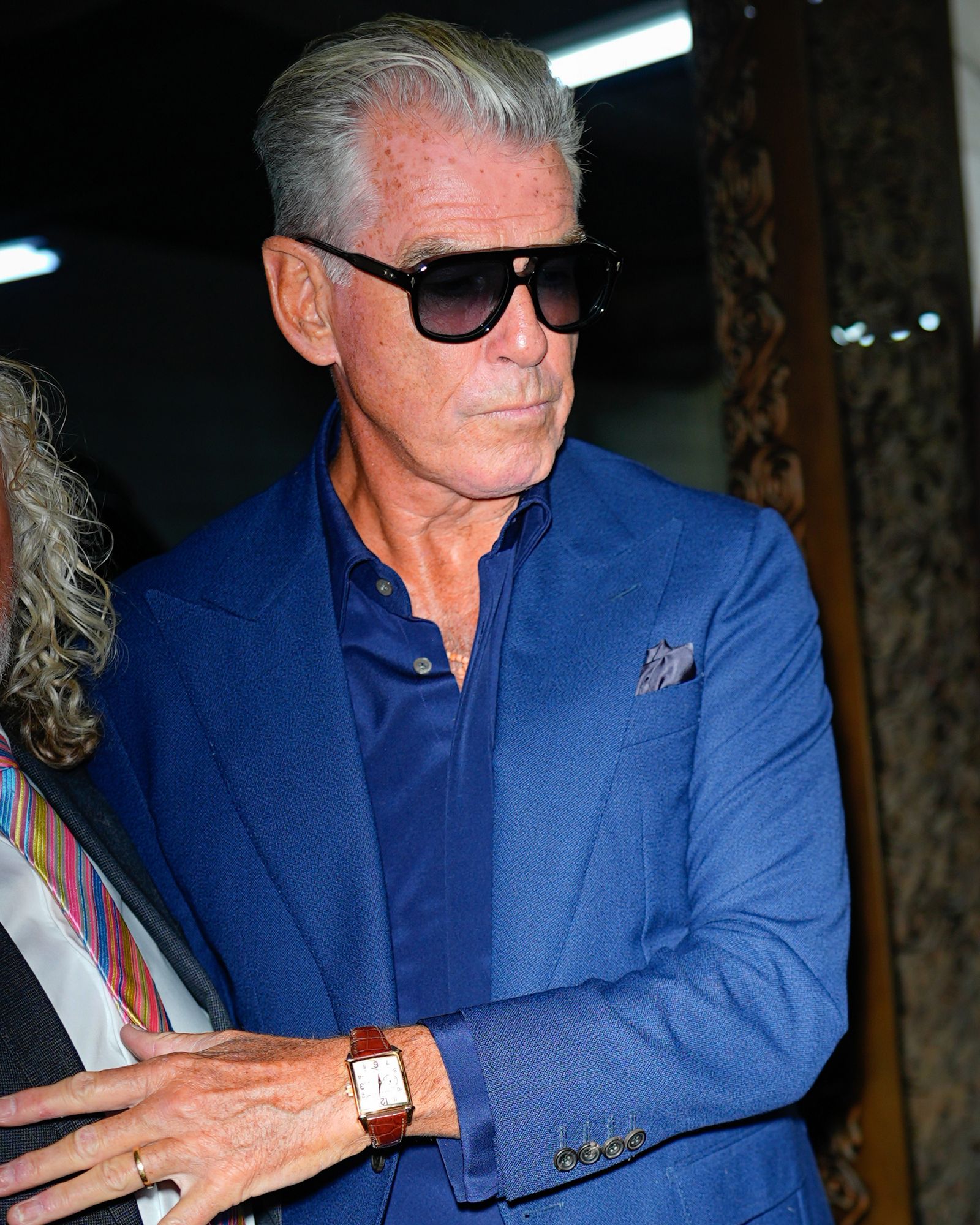TikTok users post emotional goodbyes
With the future of the app uncertain, TikTok users are posting emotional goodbyes and heartfelt thank yous to their followers.
A recap might be in order.
Between a 24-hour news cycle and a never-ending loop of social media trends, remembering what happened yesterday, much less at the start of the year could prove difficult.
From American Eagle’s controversial jeans ad and the ongoing Labubu pandemonium, 2025 (at least so far) has been chock-full of viral moments.
In an effort to remind you, our readers, what some of those big moments were, we’ve rounded them up and recapped them (in case the train passed you by on one or more of these.)
See some of the moments that perfectly capture the zeitgeist of 2025, at least so far.
Americans say ‘goodbye’ to TikTok
Before TikTok “went dark” for 12 hours in January, some of its American users had already prepared for the worst, issuing last goodbyes and posting heartfelt tributes in case they would never be able to use the social media platform again.
Influencers, content creators and casual users shared memories and posted memes and for an app they said fostered a sense of community and belonging, in addition to income.
The federal legislation that required ByteDance, TikTok’s parent company, to the divest the app’s U.S. assets, was designed to assuage national security concerns, i.e., fears that the Beijing-based company was sharing U.S. user data with China.
Fortunately, for TikTok, President Donald Trump came through with an executive order that delayed the ban for 75 days so ByteDance could find an owner in the U.S. Trump has since issued three executive orders to delay the ban, with the most recent deadline being Sept. 17. The fate of the short-form video app now lies in the hands of Chinese officials, U.S. Commerce Secretary Howard Lutnick said, and they have yet to approve a U.S.-drafted deal to sell the app’s American assets.
If Chinese officials don’t approve the deal before the deadline, and if Trump does not issue another executive order to delay the ban, TikTok could go dark again.
What’s the latest on a TikTok ban? There’s just a month until the app could be banned – again. Here’s where things stand.
Gulf of Mexico? Gulf of America.
‘Gulf of America Day’ declared as President Trump flies to Super Bowl
“Even bigger than the Super Bowl.” President Trump signed a “Gulf of America Day” proclamation as he flew over the gulf.
Gulf of Mexico? More like Gulf of America, President Donald Trump decreed on Inauguration Day.
The name change went into effect on Feb. 10, a day after Trump declared Feb. 9 as the “first-ever Gulf of America Day” while en route to Super Bowl 59.
Tech giants Google and Apple moved quickly to honor Trump’s order after the new name was formally adopted by the Geographic Names Information System.
Trump’s executive order ruffled more than a few feathers, most notably Mexican president Claudia Sheinbaum, who threatened legal action against Google and joked that she would start calling the United States “Mexican America” in retaliation.
Kendrick Lamar brought the heat to Super Bowl LIX
Between the fashion and the set list (featuring SZA), Kendrick Lamar’s halftime show performance at Super Bowl 59 was one for the books.
Not to mention surprise cameos from Uncle Sam, i.e., Samuel L. Jackson and tennis legend (Drake’s ex) Serena Williams, who crip-walked onstage.
Kendrick Lamar and Drake rap beef: What makes this music feud so significant?
Within the span of 13 minutes, the Grammy- and Pulitzer-winning rapper dropped easter eggs, trolled Drake with famed diss trick “Not Like Us” and performed a total of 11 tracks (with stunning visuals and an ensemble, to boot.)
Troves of spectators, including fans, took to social media to either react (live) and/or discuss all things related to Lamar’s performance.
But the fun did not stop there, as Lamar and SZA took “GNX” collaborations on the road for the Grand National Tour, which concluded at Northwest Stadium in Washington, D.C. on June 18.
Katy Perry hate (space?) train
Haters gonna hate. And Katy Perry, one of six notable women catapulted to the edge of space, got a lot of it.
Because of billionaire Jeff Bezos’ private space company Blue Origin, Perry and her crewmates got the chance to take a quick trip beyond Earth’s atmosphere, complete with out-of-this-world views and a dose of microgravity.
The internet, including fellow celebrities Olivia Munn and Emily Ratajkowski, were critical of the voyage, which some considered “out of touch,” even a “bit gluttonous.”
The hate train, mostly aimed at Perry, continued through the end of the mission, which took place on April 14.
Perry, for her part, did not comment on the controversy until weeks later, telling a fan who congratulated the “Dark Horse” singer on the opening of her tour, that the online world tries to make her a “human Piñata.”
“I take it with grace and send them love, cause I know so many people are hurting in so many ways and the internet is very much so a dumping ground for unhinged and unhealed,” Perry wrote.
Instant replay: Katy Perry, Gayle King, 4 other women head to space on Blue Origin launch
100 men vs. 1 gorilla debate
Could 100 men defeat a gorilla in a fight? The hypothetical question sparked discourse (and inspired memes) across social media platforms for several days in late April.
We, like everyone else involved, were just as curious about the answer so we decided to ask an expert.
Tara Stoinski, president and chief scientific officer of the Dian Fossey Gorilla Fund, told us to think about the numbers.
100 men vs. 1 gorilla? Expert weighs in on viral debate
Haunted doll blamed for New Orleans hijinks
Annabelle was in the wrong place at the wrong time, or the right place at the wrong time. (Depends on who you ask.)
The haunted “Raggedy Ann” doll, which served as inspiration for a horror movie of the same name, was minding her own business when the internet turned on her.
Annabelle, on a multi-city tour across the U.S., was accused of orchestrating the escape of 10 inmates from an Orleans Parish jail and a fire that decimated a plantation just south of Baton Rouge, event thats coincided with her visit to Louisiana.
Some were amused by the coincidence, while others, like the X user above, were certain Annabelle had something to do with it.
Once the rumor mill gets going, especially on social media, its hard to stop, something Ghost City Tours learned quicky. Tim Nealon, founder of Ghost City Tours, told USA TODAY they had received death threats.
Most of them came from people who were “absolutely convinced” that the company had something to do with all of the hijinks, Nealon said.
“I did not think people were taking it seriously, (because) I kept seeing jokes about it on Instagram and TikTok,” Nealon said. “But, I didn’t realize people were out here like, actually thinking that this was legit.”
Ghost City Tours also released a statement on social media, writing that they while they were of the comments being thrown around, they could confirm Annabelle had nothing to do with the fire.
In photos: Original ‘Annabelle’ doll of paranormal infamy visits Gettysburg orphanage
Labubu craze
Labubus are to 2025 like Stanley cups were to 2024. And the monster plushies, so popular it spawned a knockoff, are this season’s fashion accessory of choice.
The doll was designed a decade ago by Kasing Lung, a Hong Kong-born artist.
The toy, part of “The Monsters” line, and other figurines are currently sold by Beijing-based toy maker Pop Mart in “blind boxes,” a sealed package that contains a mystery toy, typically from a themed series.
But the craze for Labubus began to surge in popularity months after Lisa of K-pop girl group BLACKPINK mentioned her “secret obsession” with Pop Mart collectibles in a December 2024 interview with Vanity Fair.
“The video that started all the Labubu craze..” one user wrote in VF’s comment section.
Labubus have become a hot commodity since then, as consumers worlwide struggle (and sometimes fight each other) to nab the real thing for themselves. While those lucky enough to get one, or more are either already plotting their next kill or buying outfits for the one, or ones they already own.
Is your Labubu real? We spot differences between Pop Mart dolls and ‘Lafufus’
Jeans or genes? American Eagle ad starring Sydney Sweeney blasted
Sydney Sweeney’s American Eagle divides internet: tone-deaf or anti-woke?
American Eagle’s fall campaign featuring Sydney Sweeney is drawing fire over a controversial play on the word “genes.”
Straight Arrow News
American Eagle sought to promote its jeans through its campaign starring Sydney Sweeney, but somehow managed to elicit controversy online and support from the White House in the process.
“Genes are passed down from parents to offspring, often determining traits like hair color, personality and even eye color,” the “Euphoria” star said in the ad. “My jeans are blue.”
Critics were quick the slam the ad, arguing that the wordplay was a subtle attempt at endorsing eugenics.
By glorifying the actor’s white genetics as “good,” many argued the ad promoted the belief that some genetic features are better than others.
President Donald Trump, Sen. Ted Cruz and White House Communications Director Steven Cheung rushed toward the ad’s defense saying that the backlash was just nonsense coming from liberals.
Sydney Sweeney is everywhere: A look at her viral ad campaigns.
‘Kiss Cam’ incident at Coldplay concert
Things got a little uncomfy for a couple attending a Coldplay concert in Foxborough, Massachusetts last month. You know the one.
Two concertgoers (and tech company Astronomer, by proxy) were thrust into the spotlight after a “Kiss Cam” cameo.
The clip shows a man and a woman leap out of close embrace and duck out of view after they realized everyone at Gillette Stadium, including front man Chris Martin, could see them on the jumbotron.
“Come on, you’re OK!” Martin told the pair. “Uh oh, what? Either they’re having an affair or they’re just very shy.”
Astronomer CEO resigns after Coldplay concert turns awkward
During a recent Coldplay concert, lead singer Chris Martin unintentionally spotlighted an awkward moment in the crowd that quickly went viral.
Internet sleuths were on the case shortly after the clip went viral, with many curious and determined to uncover the identity of the couple.
And some of them did. Days later, Astronomer CEO Andy Byron and the company’s chief people officer, Kristin Cabot, resigned.
Then Astronomer hired Martin’s ex-wife Gwyneth Paltrow, a “temporary spokesperson” to be the face of its newest advertisement.
The scandal also became a sort of spectacle, spawning reenactments and prompting musical artists to issue warnings ahead of shows.





















